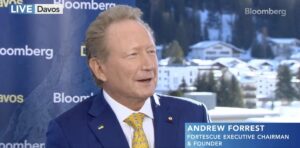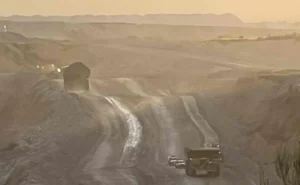Prime minister Anthony Albanese has formally committed Australia to a stronger 2030 emissions reduction target, to cut emissions by 43 per cent by the end of the decade.
Albanese said on Thursday he has written to UN climate change chief Patricia Espinosa to officially commit Australia to the 43 per cent target, which will form part of a new Nationally Determined Contribution (NDC) to be taken to COP27 in Sharm el-Sheikh in Egypt later in the year.
The new NDC sees Australia lift its target from the 26 to 28 per cent reduction first adopted by the Abbott government, and will join international peers with similar 2030 targets.
The updated NDC includes both a ten-year emissions budget for the 2021 to 2030 period, limiting cumulative emissions across the period to 4,381 million tonnes – as well as a “point” target to ensure emissions in the 2030 year are 43 per cent below 2005 levels.
It also rules out the use of surplus ‘Kyoto era’ units, breaking away from the Morrison government’s controversial attempt to use ‘carry over’ units from earlier weak targets to meet Australia’s subsequent 2030 goal.
For the true climate wonks: the detail of Australia’s new NDC pic.twitter.com/XM2EWOJdKi
— Tennant Reed (@TennantReed) June 16, 2022
Albanese signed the letter to Espinosa at an event in Canberra, joined by representatives of several business, environment and community groups – as a show of the broad consensus support behind the stronger target.
“Scott Morrison went to the Glasgow conference last year and gave an empty speech to an empty room with no changed position. We saw a pamphlet released by a former government rather than a policy framework,” Albanese said.
“What today demonstrated with the presence of the Australian Industry Group, the Business Council of Australia, the Clean Energy Council, the Australian Conservation Foundation, and the Australian Council of Trade Unions is an opportunity Australia has to end the climate wars.”
Albanese said that Labor would introduce legislation into the new parliament when it convenes for the first time after the election in July to enshrine the new targets into law.
Labor took the 43 per cent target to the federal election after publishing modelling showing how the target could be achieved through increased uptake of renewable energy technologies and a proposed strengthening of the Safeguard Mechanism to cut industrial emissions.
Federal climate change and energy minister Chris Bowen said the current “crisis” impacting Australian energy markets underscored the need for further investment in new clean energy technologies.
“At the moment, we are facing a very serious and challenging situation in the energy market – what some would describe, I think accurately, as a crisis setting,” Bowen said.
“That makes this work more important, not less. Setting the framework for the future, getting the investment going that has been so lacking, getting the policy framework working together with the states and territories to get the job done.”
“A decade of denial and delay is a decade too long. We have drawn a line under it, and we are getting on with it.”
Assistant minister for climate change and energy, Jenny McAllister, said she hoped the adoption of the stronger target would send a message to young people in particular, that the new Albanese government was taking climate change seriously.
“When I speak to young people in recent years, it has broken my heart to hear that they believe that the Australian Government has failed them and the Morrison Government’s failure to make any progress on ending the climate wars has imperilled their future,” McAllister said.
“It has hard to think of an issue that matters more for the young people of Australia.”
“Young people need to know that democracy will work for them. They need to know that our system will deliver for them. They need to know that we will be a Government who has their back. Today, we lay down that marker.”
The official commitment to the new target occurs amid a major crisis within Australian energy markets, culminating in the Australian Energy Market Operator suspending wholesale electricity markets on Wednesday to take greater control over the dispatch of power stations.
Bowen said the cause of the problem had been slow investment in renewable energy technologies.
“The problem is there is not enough investment in renewable energy. There hasn’t been enough investment in storage,” Bowen said.
“You can say the wind doesn’t always blow, and the sun doesn’t always shine. The rain doesn’t always fall either, but we can store the water, and we can store renewable energy if we have the investment.”
“That investment has been lacking for the last decade.”
The Australian Conservation Foundation welcomed the formal commitment to the strengthen 2030 emissions reduction target, saying it would provide a foundation for Australia to ramp up actions to cut emissions.
“This is a new dawn, and a meaningful boost to the action Australia will take to slash greenhouse emissions this decade and to do our bit towards addressing global warming,” Australian Conservation Foundation CEO Kelly O’Shanassy said.
“A new dawn marks the start of the day, not the end of the story.”
“The government can now get on with the nation-building opportunities to cut climate pollution to reach this target and go further.”







